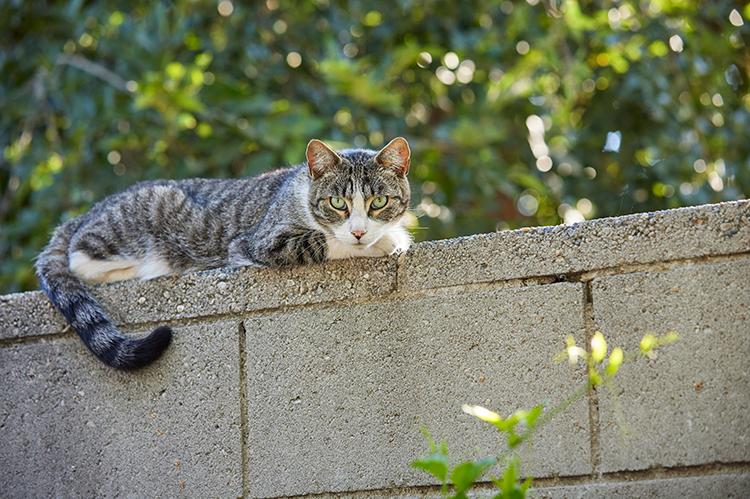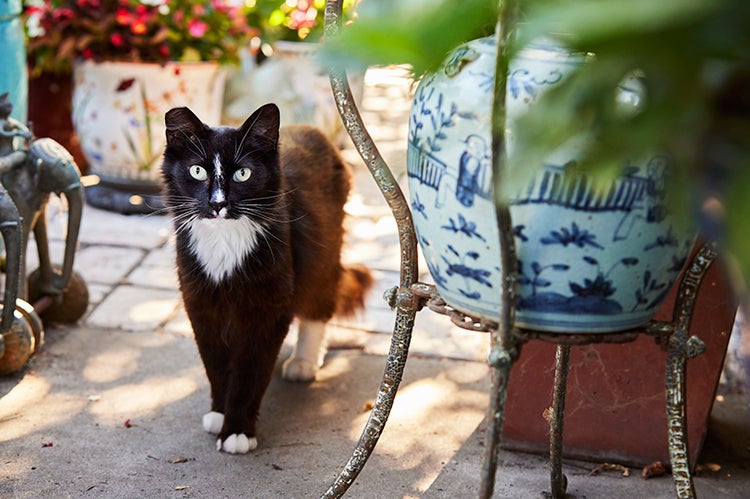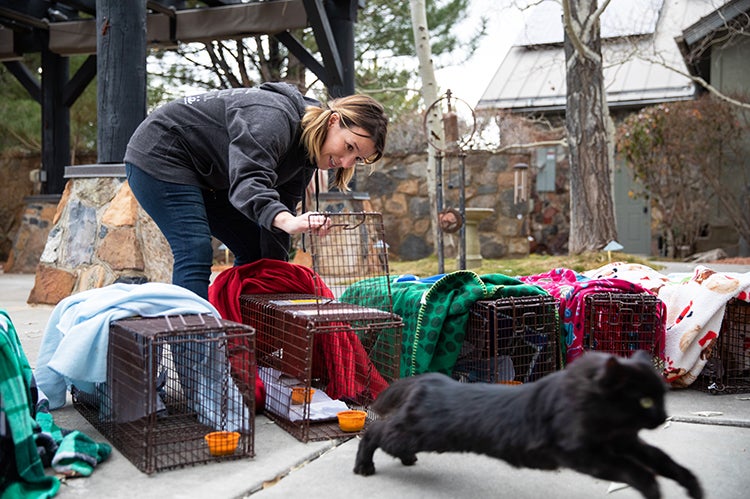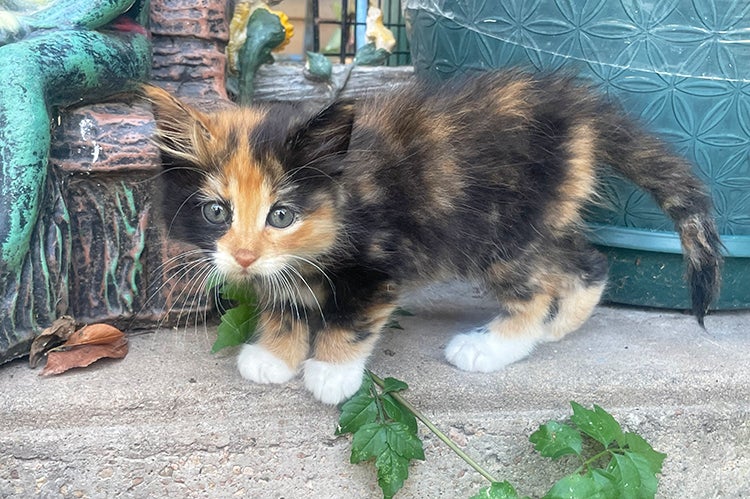What Is a Community Cat (Feral or Stray Cat)?

If you see a cat outdoors, the cat could be stray, feral, or free-roaming. Those terms are often used interchangeably by the general public when referring to cats who live outdoors. At Best Friends Animal Society, we like to call these outdoor cats “community cats” because they are valued members of our community and are often cared for by community members.
The different types of community cats whom you might see outdoors are described below, along with the different ways to care for cats in your community.

What makes a cat a community cat?
Community cats thrive outdoors. They are lovable in their own way, but they might not always be cuddly types.
Here are some types of cats you might find living outdoors in your community.
Feral cats
Many people use the term “feral cats” when speaking about all cats who live outdoors. However, feral cats are specifically cats who are not used to human contact and are happiest living outdoors either alone or with other cats in a group.
Because true feral cats have had little to no human interaction, they can be fearful of people and will often run and hide if you approach them. It is important to note that the chance of socializing a truly feral cat to people decreases significantly once the cat is over 7 weeks old.
If you encounter a cat who you think lives outdoors in your community and you don’t think the cat is feral, then the cat could be stray or free-roaming.
Semi-feral cats
Semi-feral cats might have had some interaction with people. In many cases, these cats can become socialized and even friendly to the people they are familiar with and trust. But generally they will remain fearful of strangers who approach them.
Stray cats
Like “feral,” the term “stray cat” is often used to describe all cats who live outdoors. However, stray cats are generally pet cats who have been lost or potentially could have been abandoned. Many stray cats might be wary of humans they encounter outside. However, because stray cats were once pets, they are often more comfortable with human interaction and might even enjoy attention from people.
You should not automatically assume that outdoor cats who are friendly to people are true stray cats who were abandoned or lost. They might, in fact, be free-roaming cats.
Free-roaming cats
Cats who live primarily outdoors are referred to by some as “free-roaming.” These cats might be feral, semi-feral, or stray. However, many free-roaming cats are actually outdoor or indoor-outdoor pet cats.
A large percentage of cat owners allow their pet cats to spend time outside, and if you were to come across those cats you might not be able to tell them apart from other types of community cats. Some free-roaming cats have owner identification, such as a collar or microchip, but others have no identifiable owner information. Cats who seem comfortable in the environment and aren't ill or injured are likely thriving free-roaming cats.
Colony cats
Community cats often live together in groups, which some people refer to as “cat colonies.” Cats who live in these groups are often fed and cared for by members of the community, and their populations are controlled with trap-neuter-vaccinate-return (TNVR) — the process in which community cats are humanely trapped, spayed or neutered, vaccinated, and returned to their outdoor homes.
Working cats (farm cats, barn cats, bodega cats, ship cats, warehouse cats, brewery cats, etc.)
The best choice for healthy community cats is for them to be returned to their outdoor home. However, when cats can’t be safely returned to their previous outdoor home and are unable to be adopted into a traditional home, they can be placed in other living situations, including barns, farms, ships, warehouses, and breweries. We refer to these community cats as working cats.

How is Best Friends Animal Society helping community cats?
Though community cats can live long, healthy, happy lives outdoors, well-meaning people often catch them and take them to animal shelters. But sadly, they’re at risk of being killed in shelters.
At Best Friends, we're working to save their lives via community cat programs, including trap-neuter-vaccinate-return (TNVR) programs, which involve providing spay/neuter and vaccination services to humanely trapped cats.
What is trap-neuter-vaccinate-return (TNVR)/trap-neuter-return (TNR)?
TNVR stands for trap-neuter-vaccinate-return, and it is the most humane and effective way to reduce community cat populations while saving their lives and providing public health benefits. (TNVR is also known as TNR — trap-neuter-return or trap-neuter-release — an older term from before we started talking about vaccination as a key part of the program.)
Through TNVR, community cats are humanely trapped, evaluated by veterinarians, vaccinated, ear-tipped, spayed or neutered, and returned to their outdoor homes. That means they’re returned healthy, happy, and unable to have kittens, resulting in safe, humane communities for cats and people.
What is cat ear-tipping?
Ear-tipping is generally done as part of a trap-neuter-vaccinate-return (TNVR) program. It involves surgically removing a small portion of the tip of one of a cat’s ears while the cat is under anesthesia for spay or neuter surgery. It’s extremely safe and is the universally accepted way to signify that a community cat has been spayed or neutered.

How can you help community cats?
When you find a cat who lives outdoors — whether it’s a community cat, a kitten, or a group of community cats — there are steps you can take to help.
What to do if you find stray kittens
They’re cute, cuddly, and desperately in need of your help. Or are they? If you find a litter of kittens outdoors, it’s natural to want to scoop them up and try to care for them yourself or take them to a shelter. But both of those options might actually place them in more danger. Instead, learn to give newborn kittens the best chance of survival.
Caring for community cats in the winter
When the temperature outside begins to drop, community cats need protection from the harsh weather. You can help make sure outdoor cats in your community have warm shelters where they can find safety and comfort. And the best part? You can often easily make outdoor cat houses yourself. Find out how to care for outdoor cats in the winter.
More TNVR and community cat resources
Looking to learn more about TNVR programs? Check out these resources from Best Friends Animal Society.